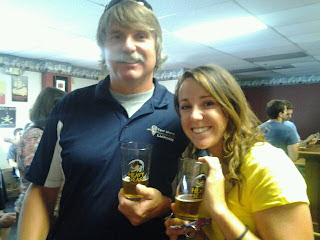This blog has allowed me to hang out with so many people that I haven’t spent much one-on-one time with lately or at all. Two people I’m super glad I got to spend time with are my cousin Molly and her husband Nick. They’ve been super supportive of my blog (as their whole family has been) since the beginning and (since before they got married this past June) they’ve been wanting to go on one of my little adventures with me. We finally went on a rainy evening last week and it was probably one of the best meals of my whole summer.
The night we went to the Helmand, an Afghani restaurant in the beautiful Mount Vernon district of Baltimore city, Nick sent me a really fascinating email; he is a former Navy officer and a huge history buff. Apparently, the Helmand restaurant is named after the Helmand province in southwest Afghanistan. This area was originally an epicenter for agriculture in Afghanistan, due to the availability of water for irrigation supplied by the Helmand River. During the Cold War, the Helmand province was heavily developed by the United States; throughout the 1960’s, the US government built irrigation canals and a hydroelectric dam in order to help farmers grow food to aid the Taliban in their fight against the Soviet Union. When communists seized the region in 1978, the project was abandoned but much of the infrastructure remains; because of this remaining infrastructure, the area is now being used to grow opium. The Helmand province is now responsible for 75% of the world’s total opium production. The province is now heavily occupied and used by the Taliban, who are most certainly using the training, weapons and technology the US inadvertently supplied them with.
But enough politics.
The Helmand restaurant references the old farming era of the Helmand province; many of the dishes are old-style Afghani recipes, drawing from local crops (such as pumpkin, fig and carrots) and traditional meats (such as lamb). The menu is consistently traditional and perfectly priced for the portions. The kaddo borwani, was delicious and perfectly cooked; baked pumpkin topped with traditional, tangy Middle-eastern yogurt and spices, served with hot naan bread was simple, flavorful and fresh. It was hard to top, but the lamb meatballs and Afghani ice cream followed beautifully. The ice cream, vanilla flavored with honey, cinnamon and other spices, was served with cold pieces of figs and mangos and was one of the most delicious ice cream dishes I have ever had. The meal was all traditional and delicious, served in a setting as simple as the ingredients: Afghani artifacts and pictures graced the walls, simple white tablecloths covered the tables and light middle-eastern style music played.
The dinner conversation was as great as the meal. Molly and Nick are highly intelligent, curious and friendly. I enjoyed getting to know them on a personal level that being one of 31 cousins on that side often prohibits. It was funny watching them choose what dish they wanted; they had been the ones to suggest the more “adventurous” and “exotic” location and they stuck to their guns and ordered traditional Afghani three course meals from the restaurant week menu.
Although the Helmand restaurant is slightly expensive (i.e. less accessible to the average Baltimorean) and does not offer traditional Baltimore cuisine, it is an important part of Baltimore food culture. Located in an up-and-coming neighborhood full of other ethnic restaurants, the Helmand provides Baltimore residents with a taste of non-traditional foreign food. We have a little Italy, a Greektown and a plethora of Mexican and other Latin-inspired restaurants, but Afghani food is difficult to find. Due to recent politics, it is not often sought-out either. The Helmand, however, is consistently one of Baltimore’s best restaurants and I don’t believe it’s just because of the food. The friendly service, simple but elegant atmosphere and, of course, the delicious food bridge the cultural gap allowing customers to enjoy not only real, traditional Afghani food but real, traditional and non-politicized Afghani culture. This cultural education through food should (and does) encourage cultural open-mindedness and for that reason, the Helmand deserves the MVP for Baltimore food culture.
References:
http://www.helmand.com/





















































